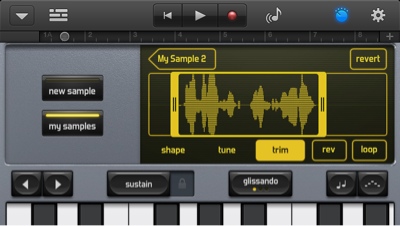For an earlier audio assignment to create a 90sec story out of at least 5 sound effects, I used sound effects that I already had on hand from a series of podcasts I am producing with my daughter, Amber. As before, I’m again making a slight tweak on the formal assignment description for DS106 Audio Assignment 36, “Create A Ds106 Radio Bumper”.
What is a bumper? It is a short recording that identifies the radio station with signature music or an expression that makes sure the listeners know what they are tuned into.
It’s still a bumper, but for a podcast, not DS106 Radio. There are three different audio files posted in the series.
Track 1: “Intro Music RLProductions” is used like an abbreviation or I what I like referring to as an Audio Icon for anything associated with Rockylou Productions. I’ll digress just a minute hear to say that I know I’m mentioning Rockylou Productions often in my posts. I’m not trying to promote myself, this just happens to be my personal playground where I spend much of my time creating, and I have material I can easily pull from to complete the assignments in a more compressed time frame. I then have time to create tutorials for the assignments that can help others.
Back to your regularly scheduled program…….
The Audio Icon is used at the beginning as part of the intro and at the very end. We also use this chord as part of the final credit sequence for some of our videos. It was made by recording myself playing a simple “D” chord on my 12 string guitar. Then I used GarageBand to layer 5 different tracks by playing around with different effects. It was a fun morning putting that together. I just kept trying this or that, until I stumbled across a combination that I felt was memorable.
Track 2: “Obruni Bumper Start” is an example of the template and style we use for our intro. The chord plays to let you know that you’ve arrived. Then I welcome the listener and give a short introduction of the podcast they are about to hear. We want this to be short, but descriptive enough to grab the listeners attention and they’ll want to keep on listening.
Track 3: “Obruni Bumper End” is an example from another podcast in the series, “Transportation”. But the format is always the same. At the end of the spoken text of the story I increase the volume of the soundtrack that we have associated with the Obruni podcasts.(See note.) I then fade in the the audio credits – like who it was written by, an attribution for the soundtrack music, and anything else that may be needed. At the very end you hear the familiar Rockylou Productions chord strum. We have now “left the building”.
Note: I had to track down the publishers to obtain written permission to use the Fanti music, Apatampe, so that I wouldn’t infringe on copyright issues. It took some digging, but I finally found the publishers and they were very nice about it. As long as I included an attribution and I didn’t use it for commercial purposes, it was fine to use for my projects.









